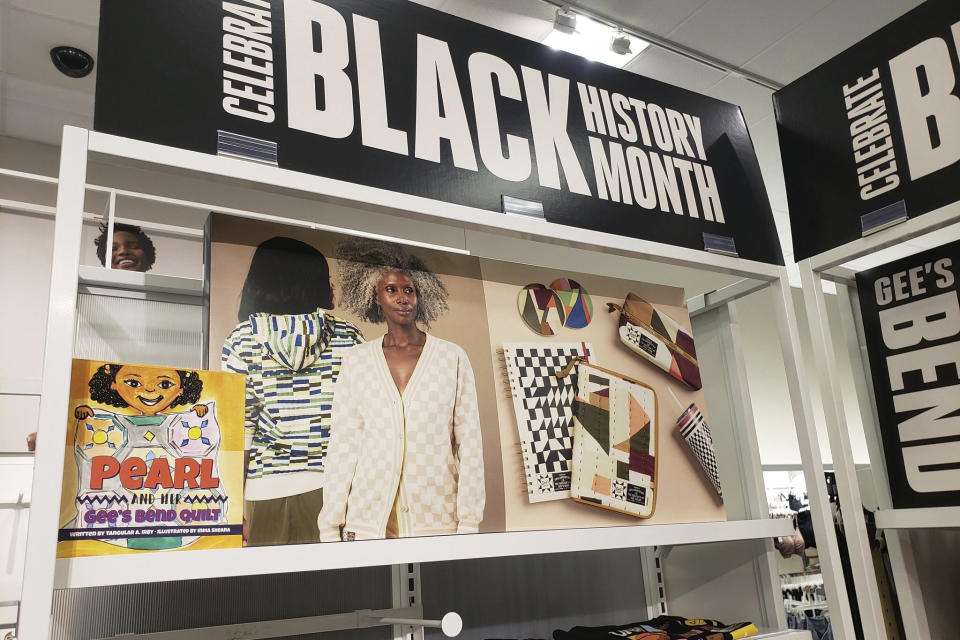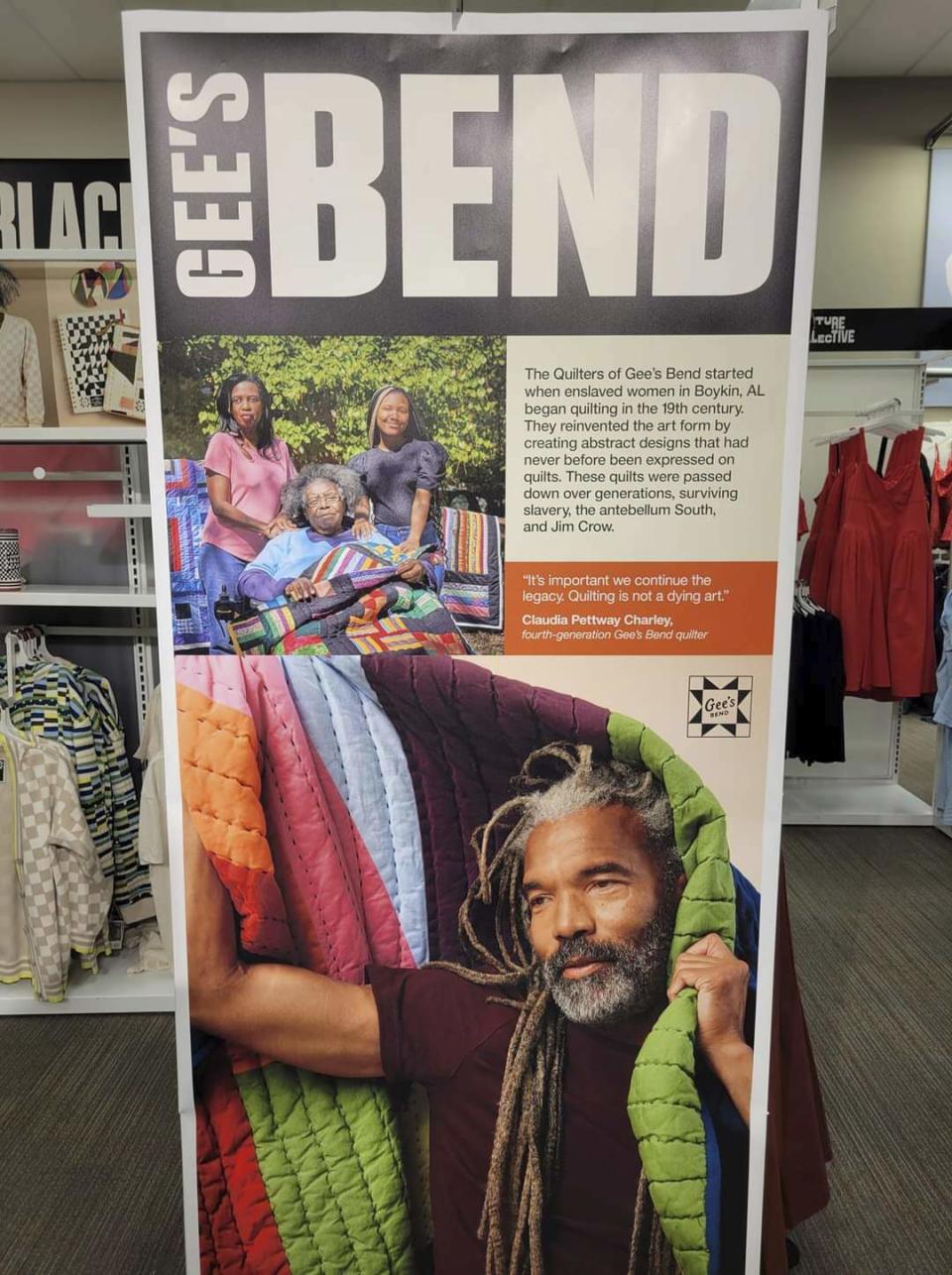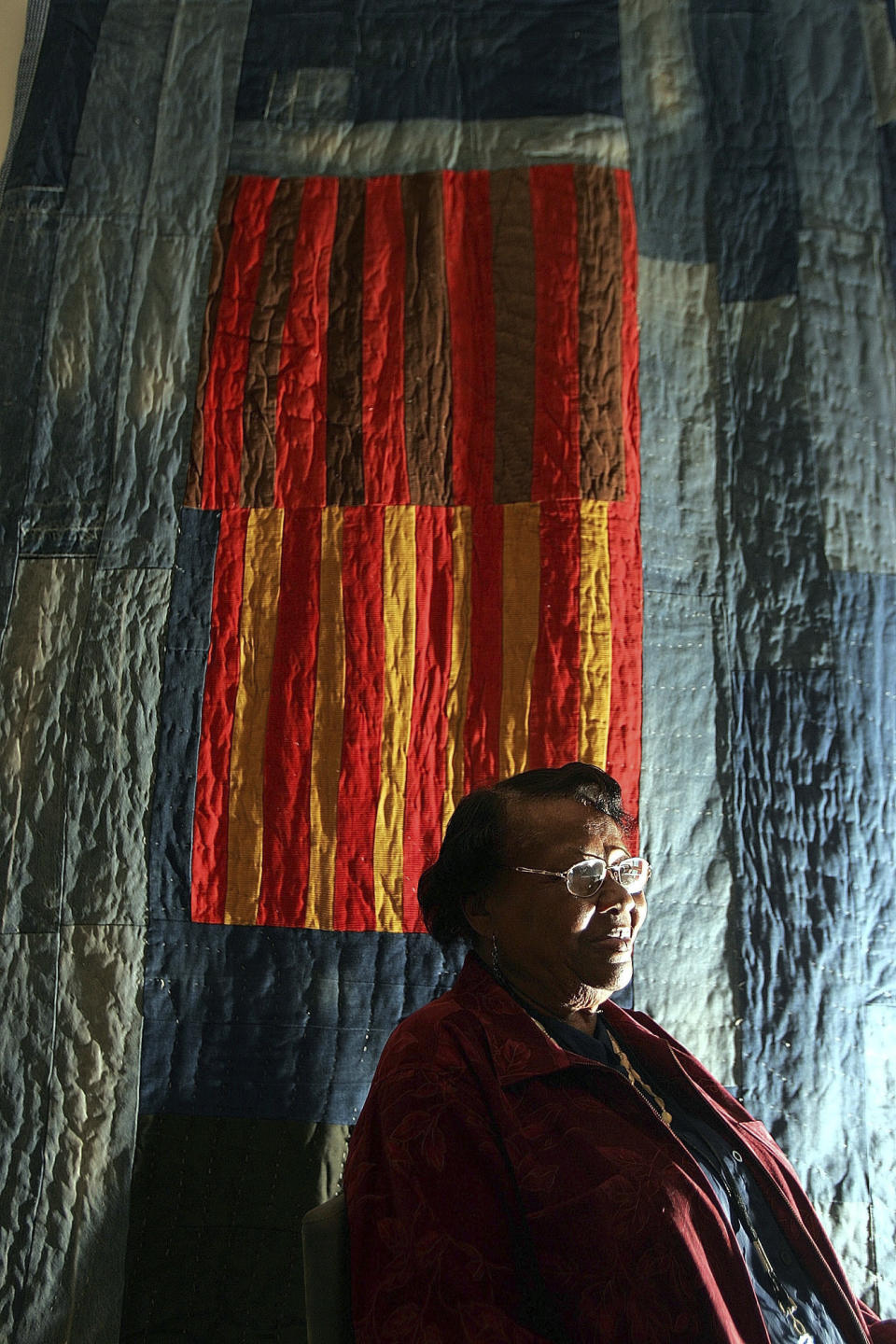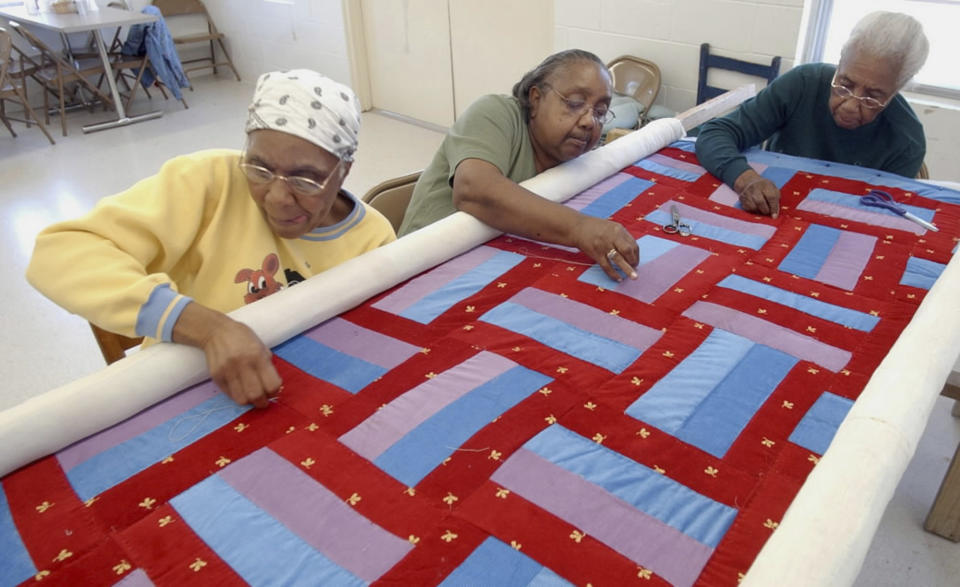They made one-of-a-kind quilts that captured the public's imagination. Then Target came along
Over the past two decades, Gee’s Bend quilts have captured the public’s imagination with their kaleidoscopic colors and their daring geometric patterns. The groundbreaking art practice was cultivated by direct descendants of slaves in rural Alabama who have faced oppression, geographic isolation and intense material constraints.
As of this year, their improvisational art has also come to embody a very modern question: What happens when distinctive cultural tradition collides with corporate America?
Enter Target. The retailer launched a limited-edition collection based on the quilters' designs for Black History Month this year. Consumer appetites proved to be high as many stores around the country sold out of the checkered sweaters, water bottles and faux-quilted blankets.
“We’re actually in a quilt revival right now, like in real time,” says Sharbreon Plummer, an artist and scholar. “They’re so popularized, and Target knew that. It created the biggest buzz when it came out.” Indeed, there has been a resurgence of interest among Gen Z and millennials in conscious consumption and the homemade — with “cottagecore” style, baking bread, DIY bracelets — but both are at odds with the realities of fast fashion.
The Target designs were “inspired by” five Gee's Bend quilters who reaped limited financial benefits from the collection’s success. They received a flat rate for their contributions rather than pay proportionate to Target’s sales. A spokesperson for Target wouldn’t share sales numbers from the collection but confirmed that it indeed sold out in many stores.
Unlike the pay structure of the Freedom Quilting Bee of the 1960s — an artist-run collective that disbursed payment equitably to Gee's Bend quilters, who were salaried and could set up Social Security benefits — one-off partnerships with companies like Target benefit only a small number of people, in this case five women from two families.
The maxim “representation matters” is not new, but it's gaining wider traction. Still, when visibility for some doesn't translate into meaningful change for a marginalized community as a whole, how is that reconciled?
A HISTORY OF OUTSIDERS
”Every stage of the finances has been problematic,” says Patricia Turner, a retired professor in World Arts and Culture and African American Studies at UCLA who traced the commodification of Gee's Bend quilts back to the white collector Bill Arnett in the 1990s. “I’m really bothered by Target's in-house designer manipulating the look of things to make it more palatable for their audience," she says of the altered color palettes and patterns.
Target spokesperson Brian Harper-Tibaldo said that quilters had the opportunity to provide input on multiple occasions throughout the process.
“We worked with five quilters from The Quilters of Gee’s Bend on a variety of limited-time only items," he wrote in an emailed statement. “As is standard with limited-time collections at Target, each quilter was paid a discussed and agreed upon fee for their services. As outlined in our contracts, Target had the right to make final design decisions, however, with the goal of honoring their storied heritage, the process was highly collaborative.”
While thumbnail-size photos of the makers appeared on some marketing materials and the text “Gee's Bend” was printed on clothing tags, the company's engagement with the quilters was limited. As soon as Black History Month ended, the quilters' names and images were scrubbed from the retailer's site.
Target has pledged to spend more than $2 billion on Black-owned businesses by 2025.
The situation today mirrors that of the 1990s, when some quilters enjoyed newfound visibility, others were disinterested and still others felt taken advantage of. (In 2007, several quilters brought a series of lawsuits against the Arnett family, but all cases were settled out of court and little is known about the suits because of nondisclosure agreements.)
The profit-oriented approach that emerged, which disrupted the Quilting Bee's price-sharing structure, created “real rifts and disharmony within the community,” Turner explains, over engaging with collectors, art institutions and commercial enterprises. “To have those bonds disrupted over the commercialization of their art form, I think, is sad.”
REPRODUCING ART OUT OF CONTEXT
Quilts are made to mark major milestones and are gifted to celebrate a new baby or a marriage, or to honor someone’s loss. Repurposing fabric — from tattered blankets, frayed rags, stained clothes — is a central ethos of the community’s quilting practice, which resists commodification. But the Target collection was mass-produced from new fabrics in factories in China and elsewhere overseas.
The older generations of Gee's Bend quilters are known for one-of-a-kind designs with clashing colors and irregular, wavy lines — visual effects borne of their material constraints. Most worked at night in houses without electricity and didn't have basic tools like scissors, let alone access to fabric stores. Stella Mae Pettway, who has sold her quilts on Etsy for $100 to $8,000, has characterized having scissors and access to more fabrics now as a paradox of “advantage and a disadvantage.”
Many third- and fourth-generation artists returned to quilting as adults for a creative and therapeutic outlet, as well as a tether to their roots. After her mom died in 2010, quilter JoeAnn Pettway-West revisited the practice and found peace in completing her mother’s unfinished quilts. “As I’m making this stitch, I can just see her hand, stitching. It’s like, we’re there together,” she says. “It's a little bit of her, a little bit of me.”
Delia Pettway Thibodeaux is a third-generation Gee’s Bend quilter whose grandmother was a sharecropper and whose bold, rhythmic quilts are now in the Philadelphia Museum of Art’s permanent collection. For the Target collection, she received a flat fee rather than a rate proportional to sales.
“I was kind of concerned in the beginning” about how quilts would be altered to fit with the collection, Pettway Thibodeaux says. “But then again when I saw the collection, I felt different.”
Claudia Pettway Charley, a Gee’s Bend quilter and a community manager at Nest, a nonprofit, said in an emailed statement that the collaboration was “a great way to make our designs accessible” to a wide audience.
“We had no idea how large this campaign would be and what it would mean to our community,” she said.
LOOKING FOR ECONOMIC REVITALIZATION
Because job opportunities are so limited in Gee's Bend, many fourth-generation quilters have left the area to take jobs as teachers, day care workers, home health aides, and to serve in the military.
“We, as the next generation, we was more dreamers,” Pettway-West says.
National recognition has certainly brought some positive change. But more visibility — from museum exhibitions, academic research, a U.S. Postal Service stamp collection — hasn't necessarily translated into economic gains. After all, the average annual income in Boykin, Alabama, is still far below the poverty rate at about $12,000, according to the nonprofit Nest.
“This is a community that still, to this day, really needs recognition, still needs economic revitalization," says Lauren Cross, Gail-Oxford Associate Curator of American Decorative Arts at The Huntington Museum of Art. "And so any economic opportunities that, you know, funnel back to them, I support."
Target’s line in particular, though, is disconnected from the group’s origins and handmade practice, she says. It's a problem that distills the very challenge at hand when something handcrafted and linked to deep tradition goes national and corporate.
“On one hand you want to preserve the stories and that sense of authenticity," Cross says.
"And on the other hand," she asks, “how do you reach a broader audience?”

 Yahoo Finance
Yahoo Finance 



